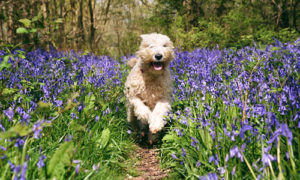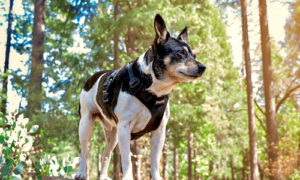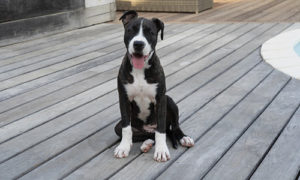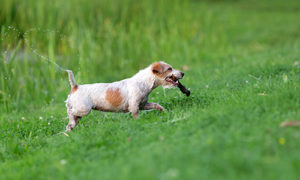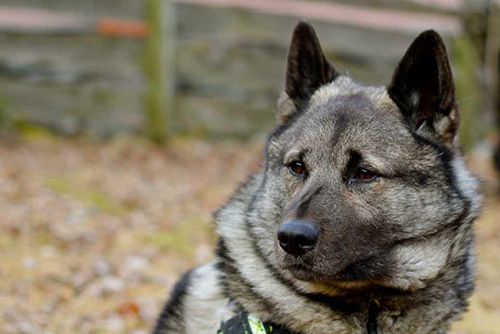
The Norwegian Elkhound is a Nordic breed that has been used in Scandinavia to guard homesteads and for moose and bear hunting since ancient times. You can trace the Elkhound back six thousand years, and it is believed to have been the esteemed canine companions of the Vikings. In the early 1900s, it was first imported to America. This breed is highly adaptable and is still utilized as a hunting dog in Scandinavia, a companion, and a show dog. The Norwegian Hunting Association was the first to show the Elkhound in a dog show in 1877. The dogs gained a following in England in the 1920s and the United States a decade later.
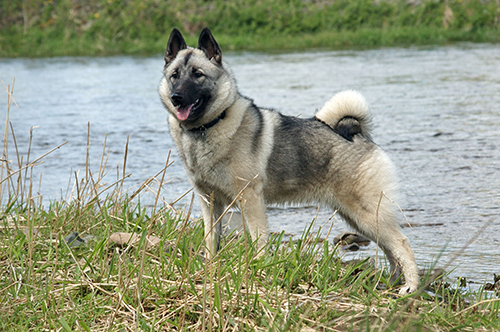
Breed Standard
The Norwegian Elkhound is confident, rugged, and dignified; it is a hardy gray, Nordic hunting dog. It is close-coupled and medium-sized with square proportions and moderate substance. This breed has a slightly arched, muscular neck, a straight back, a deep chest, small, oval-shaped paws, and a high-set tail covered with thick fur carried over the back. It has a slightly arched broad skull, a tapered muzzle, and a high set of prick ears, sensitive to sounds undetectable by humans. Their eyes are oval-shaped, dark brown, and medium in size, which gives the face a courageous and keen expression.
Breed Facts
| Energy level | Watchdog ability | ||
| Exercise requirements | Protection ability | ||
| Playfulness | Grooming requirements | ||
| Affection level | Cold tolerance | ||
| Friendliness toward dogs | Heat tolerance | ||
| Friendliness toward other pets | Friendliness toward strangers | ||
| Ease of training |
- Popularity: Somewhat uncommon
- Family group: Spitz, Northern
- Country of Origin: Norway
- Date developed: Ancient times
- Original purpose: Hunting moose, bear, other big game
- Current purpose: Companion, moose hunting
- Other names: Elkhound, Norsk Elghund
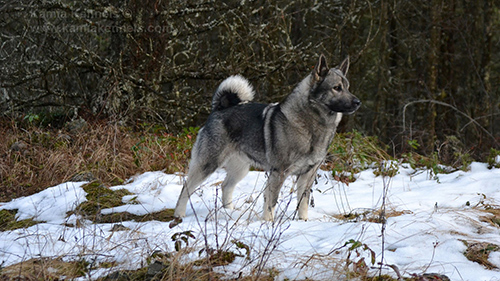
Activity level: High. The Elkhound is a dog that possesses a lot of energy and stamina. They can hunt all day in the worse terrain and even in harsh weather. The dogs need at least 20 to 30 minutes of exercise two times a day. They’re also excellent in tracking, obedience, and agility. Elkhounds love to hunt; in fact, they were developed to track and hunt all day under arduous conditions. It will not feel satisfied without daily physical and mental exertion. This exertion can be in the form of stimulating play sessions, a long walk, or a good jog.
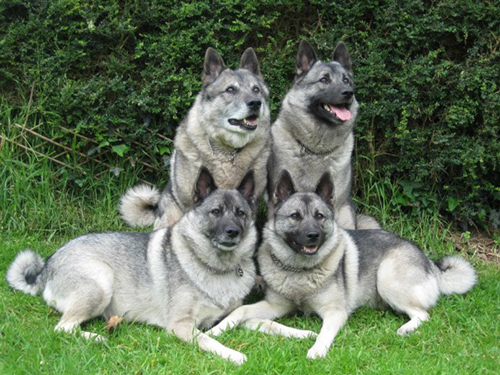
Grooming: The dogs need brushing at least twice weekly, except during seasonal shedding in spring and fall when daily brushing is necessary.
Coat: The Elkhound’s coat is thick, weather-resistant, and hard. Its smooth double coat consists of coarse straight guard hairs and a dense, soft, woolly undercoat. The coat is shorter on the ears, head, and front of the legs and is longer on the back of the neck, the hind legs, and the tail.
Color: Gray. The undercoat is light silver, as are the legs, stomach, buttocks, and underside of the tail. The body coat is of varying shades and is the darkest on the saddle. The muzzle, tail tip, and ears are black.
Group: Hound
Year of recognition by the AKC: 1913
Norwegian Elkhound Temperament
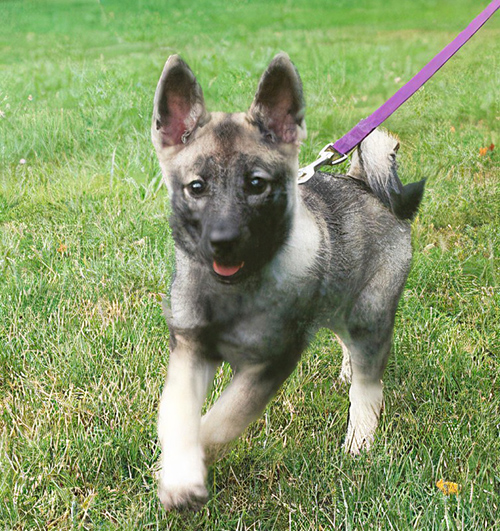
The Norwegian Elkhound is an energetic, bold hunter with keen senses and somewhat independent nature. These dogs are friendly, sociable, loyal, and affectionate with their families, and at times can be possessive and overprotective. Elkhounds are sensitive and highly responsive to praise; however, the dogs are also sensitive to harsh correction and criticism. They have incredibly keen senses and well-honed problem-solving abilities. Training requires consistency, a creative approach, and persistence.
Elkhounds combine the traits of spitz-like dogs and hounds, resulting in a playful, independent, bold, boisterous, and alert dog. The breed is always ready for adventure and is excited when outdoors and in cold weather. This dog can get frustrated and destructive if not exercised regularly. It is friendly with strangers but may be aggressive with strange dogs. If not trained correctly, it will pull when on the leash and does a lot of barking.
Health
- Main concerns: CHD
- Minor problems: hot spots, kidney disease (renal dysplasia), sebaceous cysts
- Rarely seen: Fanconi syndrome, PRA, patellar luxation, intracutaneous cornifying epithelioma
- Recommended tests: hip, eye, (Fanconi), (knee), (PRA)
- Life span: 10 to 12 years
- Weight: male – 55 pounds; female – 48 pounds
- Height: male – 20.5 inches; female – 19.5 inches
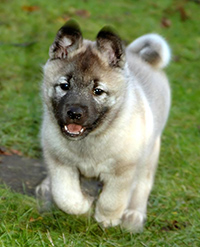
Breeder and Buyer’s Advice
Before looking for Norwegian Elkhound puppies for sale, do your research. You can find a lot of invaluable information about the breed on the parent club’s website. There you can obtain a list of reputable and approved breeders in your area. Please make sure you ask plenty of questions because some breeders want potential owners to know about their dogs. If possible, it would be good to visit the kennel to view the puppies up close. The price will vary contingent on the breeder and the dog’s pedigree.
Parent club: Norwegian Elkhound Association of America (https://neaa.net/); founded in 1934
Regional clubs: Fourteen clubs are listed on the NEAA’s website.
Rescue: Visit the website for all information about Norwegian Elkhound rescues.

